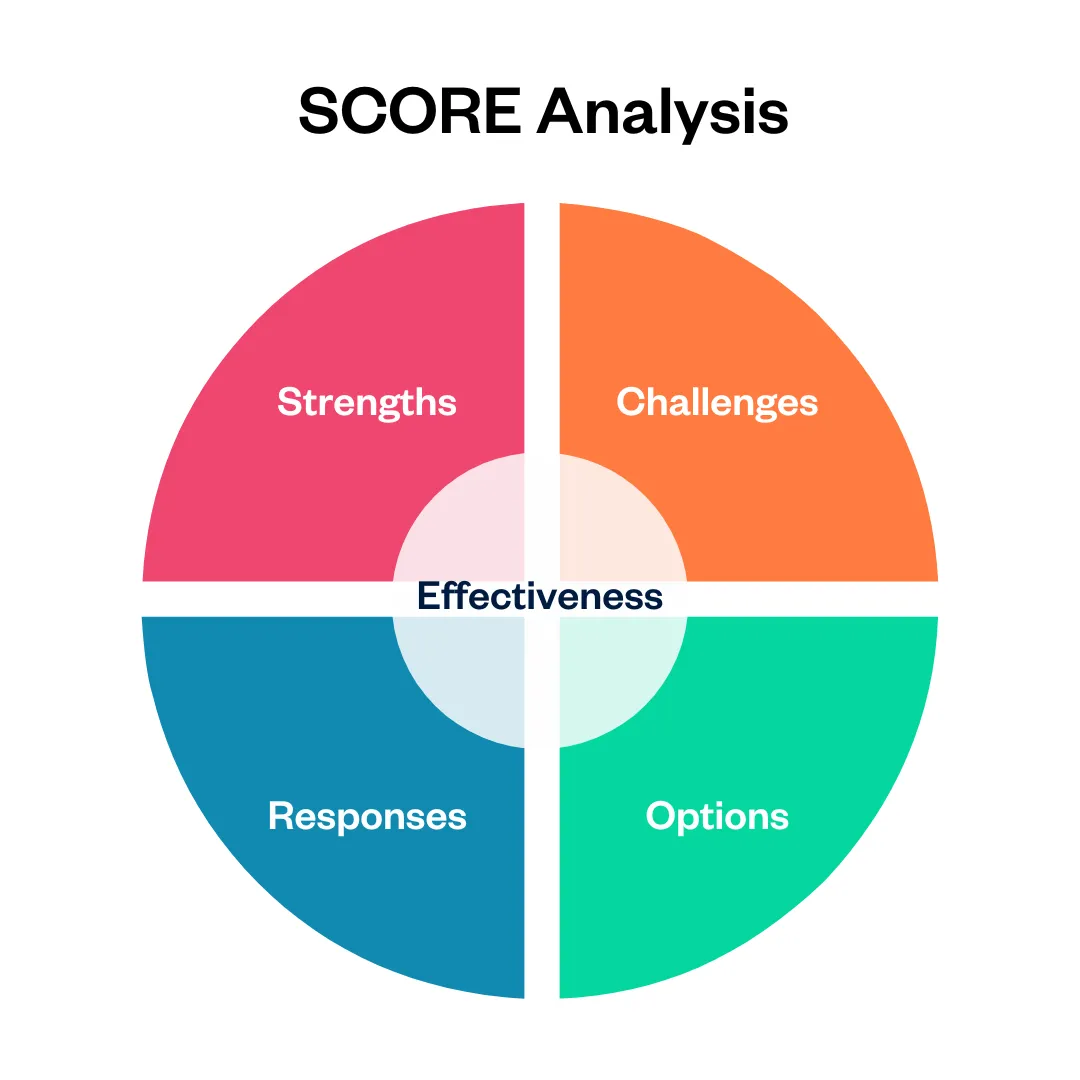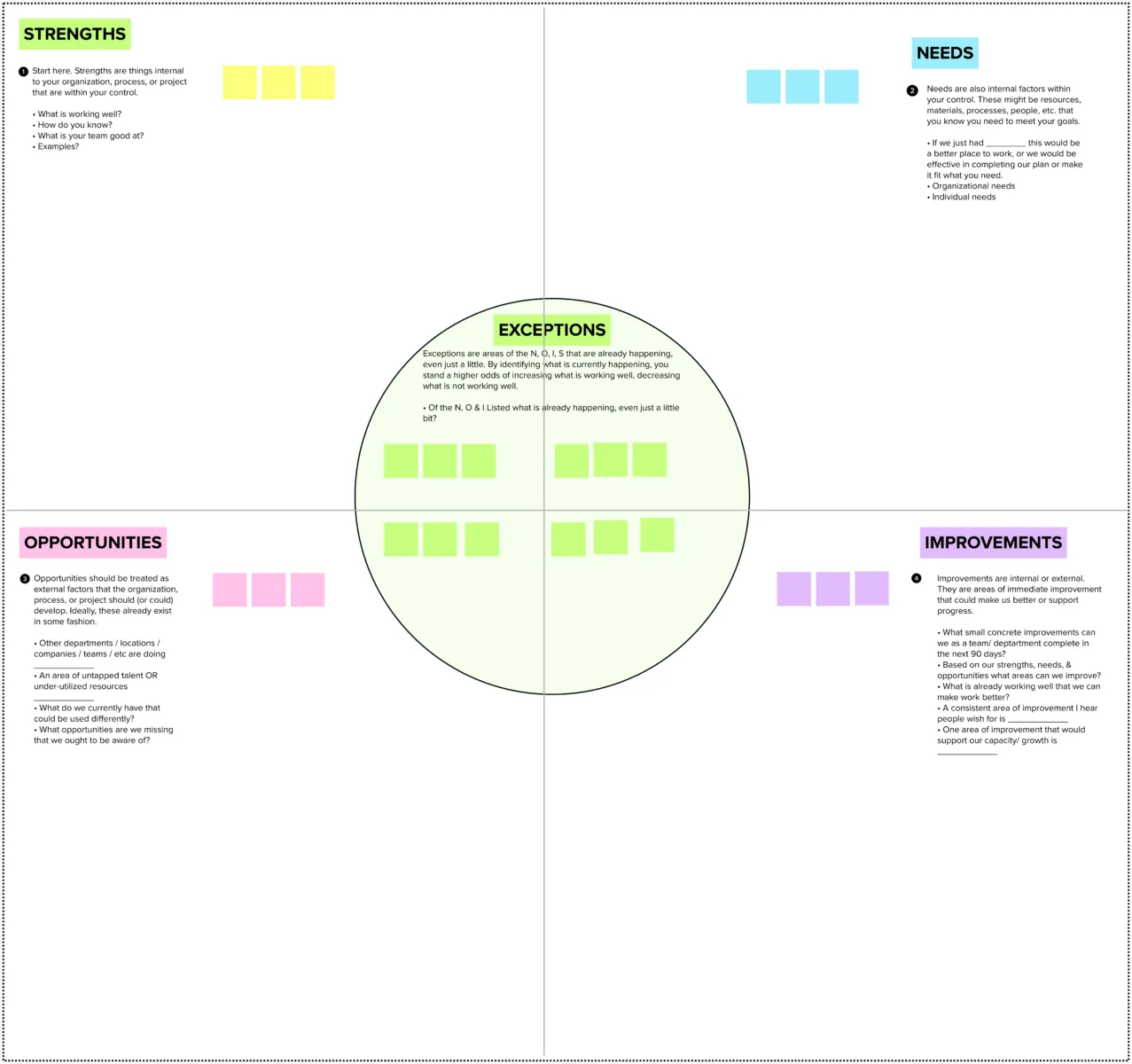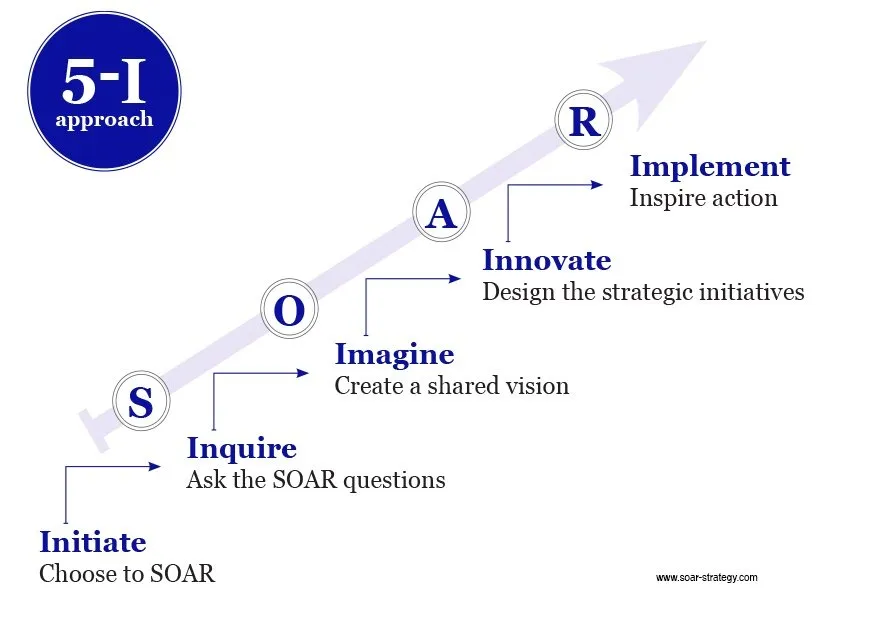3 Better Alternatives to SWOT Analysis for Business Planning

Probably the best-known strategic planning tool out there, SWOT analysis has served businesses for decades in making big decisions. SWOT—which stands for Strengths, Weaknesses, Opportunities, and Threats—has helped businesses looking to launch or grow, or solve problems like getting more customers or standing out from the competition.
But SWOT isn’t the only model out there, and it isn’t always the best. This guide will show you the limitations of SWOT analysis and what you can use instead.
Here’s What We’ll Cover:
Where SWOT Analysis Falls Short
Where SWOT Analysis Falls Short
The SWOT technique has served many well, but we’ve noticed the cracks in the armor.
- SWOT Feels Negative
When you’re business planning, you want to have a positive outlook. Or at least a balanced one. Weaknesses and Threats emphasize the bad. It is important to keep your weak points in mind, but other models frame them as challenges rather than shortcomings. - SWOT Is All Problems, No Solutions
SWOT analysis identifies problems but no solutions, and opportunities but no game plan for how to achieve them. For mapping out next steps, SWOT falls short. - SWOT Is Vague
The broad terms mean that you don’t go in-depth with your analysis. Everything is kept relatively shallow. You may want a more detailed view of your business capabilities for planning.

Alternatives to SWOT Analysis
All of the following models have some similarities with SWOT. For instance, they all have an Opportunities section (called Options in SCORE), and they all consider external factors that might create challenges or risks.
But each of these 3 alternatives to SWOT analysis has significant advantages.

1. SCORE Analysis: Most Action-Oriented
Strengths (S): What you are doing well (or have the potential to do well)
Challenges (C): Areas where you need additional resources or capabilities to succeed
Options (O): The opportunities and risks you face
Responses (R): The response from stakeholders and returns or rewards you anticipate
Effectiveness (E): How you intend to make your initiative work efficiently and reliably
SCORE Analysis Advantages
- Considers the current state of your organization before any action, and the future state after you take action
- Includes measurability by considering the impacts of your action and plans for assessing its effectiveness
- More proactive than a SWOT analysis
Like SWOT, the SCORE model is flexible enough to use on a micro-level for individual projects as well as for broad-scope business plans. But SCORE takes a more positive and action-oriented approach than SWOT. It leads you through potential obstacles and encourages you to generate responses for them.
In SWOT, weaknesses and threats can overlap, and can be discouragingly negative. In SCORE, Challenges encapsulates both and helps you frame issues more positively.
SCORE also goes beyond just identifying issues and opportunities to more complex considerations about the real-world application and impact of your initiative. In particular, the Responses and Effectiveness steps help support the how and why of your proposal.
How to Do a SCORE Analysis
You can start with any part of SCORE and work through it in any order. It’s best to end with Effectiveness, which should be evaluated for each of the previous steps in your analysis.

2. NOISE Analysis: Most Analytical
Needs (N): What you need within your organization to make your goals a reality
Opportunities (O): Objectives you could potentially achieve
Improvements (I): Positive changes you could make immediately to push progress forward
Strengths (S): Internally, what’s working within your organization
Exceptions (E): These are exceptions to each of the previous 4 steps that currently exist in your organization
NOISE Analysis Advantages
- Solution-oriented framework
- Feels more positive than SWOT analysis
- Exceptions step allows for more complexity in your strategy
- Best for established teams
NOISE uses more solution focused language than SWOT. For example, instead of highlighting roadblocks (weaknesses, threats, challenges), Needs reframes the discussion to focus on what it will take to succeed. And Improvements identifies what you’ll do to get to your goal.
The Exceptions exercise is unique to NOISE. It is meant to encourage collaboration between teams. The idea is to think of exceptions to the rule. When in the past has the team overcome a challenge before, and how can they do it again? These are useful questions when business planning.
NOISE is great for creating a strategic approach to business opportunities. You identify the needs of the business in order to take advantage of opportunities to solve them. This approach trains you to see potential growth.
For this reason, NOISE is a better model for an established organization looking to develop a strategic plan for the next phase of the business than for new businesses needing an action plan.
How to Do a NOISE Analysis
The steps of a NOISE analysis don’t follow the acronym exactly. You begin with Strengths, then move to Needs, Opportunities, and Improvements. You end with Exceptions, which are applied to each of the previous discussions.
Read more about how to perform a NOISE analysis from its creator, Mike Cardus.

3. SOAR Analysis: Most Motivational
Strengths (S): What your organization does well
Opportunities (O): What could be possible to achieve
Aspirations (A): Your dreams or wishes
Results (R): The outcome you’d like to see
SOAR Analysis Advantages
- Focuses on the positive
- Great for inspiring big ideas and promoting engagement within a team
- Works well for new organizations in the “dreaming big” phase
- Includes an action-oriented process (5-I) for applying the insights uncovered in your research
This SWOT alternative provides the most positive outlook for business planning. In fact, SOAR doesn’t involve any negative words at all. This more positive outlook is ideal for inspiring a team to think about possibilities and make a very big change. And it’s well suited to a new business that may be more interested in where they can go or what they can create than what stands in their way.
The biggest criticism of SOAR is that it overlooks areas that pose challenges. This is unhelpful if you want to identify weaknesses in your current situation or plan for potential threats.
How To Do a SOAR Analysis
SOAR analysis is based on the principles of collaboration. The method encourages you to apply a series of action steps with your team after your SOAR research. These steps are referred to as the 5 I’s: Initiate, Inquire, Imagine, Innovate, and Implement.
Learn more about SOAR and the 5-I process from creators Jackie Stavros and Gina Hinrichs.

Key Takeaways
SWOT analysis is a classic business tool. Small business owners and large corporations alike have used it and found it helpful for strategy and planning. But it’s not the only way forward. You may want to take a different approach based on the stage of your business, your goals, or how complex you want to get with the exercise.
An action-oriented tool like SCORE may be better if you want to develop a strategic improvement plan. SOAR may be better for big-picture brainstorming. And NOISE may be best for digging deep into complex questions.
There are so many different ways to approach business planning. The most effective tool is the one that suits your business plans and company culture the best.
About the author
Shannon Kelly is a Senior Content Marketing Manager at FreshBooks.
RELATED ARTICLES


 What Is Multi-Channel Retailing and How to Build It?
What Is Multi-Channel Retailing and How to Build It? Definitions of Supply Chain Management and Guide
Definitions of Supply Chain Management and Guide The Differences Between Takt Time vs Cycle Time vs Lead Time
The Differences Between Takt Time vs Cycle Time vs Lead Time How to Perform Inventory Analysis: Methods, Tips & KPIs
How to Perform Inventory Analysis: Methods, Tips & KPIs What Is AVS Check (Address Verification Service)?
What Is AVS Check (Address Verification Service)? Small Business Owners: 1099 Rules for Employers
Small Business Owners: 1099 Rules for Employers